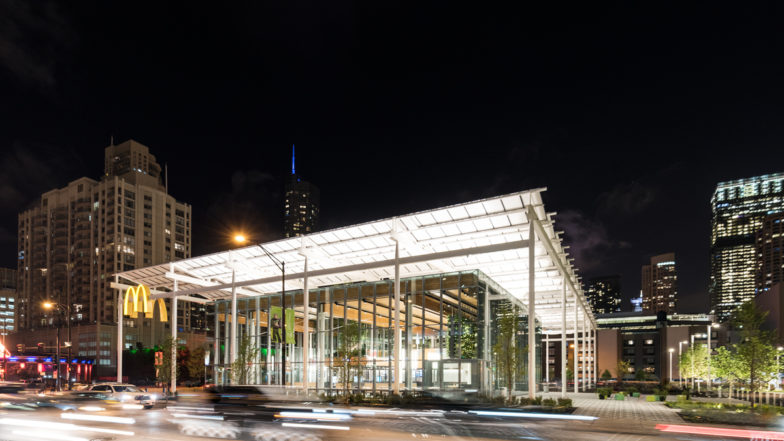Aside from its striking appearance, this McDonald’s location is also unique because of the innovative practices utilized during its design and construction. Early on, McDonald’s put an emphasis on creating a space that was sustainable and used environmentally-friendly construction techniques, hoping to apply for a LEED Platinum certification, a designation given only to the most sustainable projects.
“McDonald’s was very dedicated to the idea of sustainability,” said Carol Ross Barney, the founder and design principal at Ross Barney. “We were really intrigued by that idea.”
One of the key ways this goal was achieved was through the use of Ozinga’s CarbonCure-treated concrete, a sustainable solution the Chicago-based concrete, materials, and logistics company has been utilizing on some of its projects for over three years.
“CarbonCure is a unique technology where we are able to capture carbon dioxide (CO2) from carbon-emitting plants,” said Paul Ozinga, executive vice president of the company. “We get that CO2 delivered to our plant, refined, and then we’re able to introduce it back into the concrete.”
Ozinga gets its CO2 from a fertilizer plant in Wisconsin and reuses those emissions in its concrete mixes to great effect. Using CarbonCure during the concrete mix process has numerous benefits. First off, it strengthens the overall concrete mix, decreasing the amount of cement that is needed to achieve the necessary strength. This effectively decreases the amount of CO2 naturally emitted during the production of cement and concrete. CarbonCure also offers a 5-8% cement reduction per yard.


